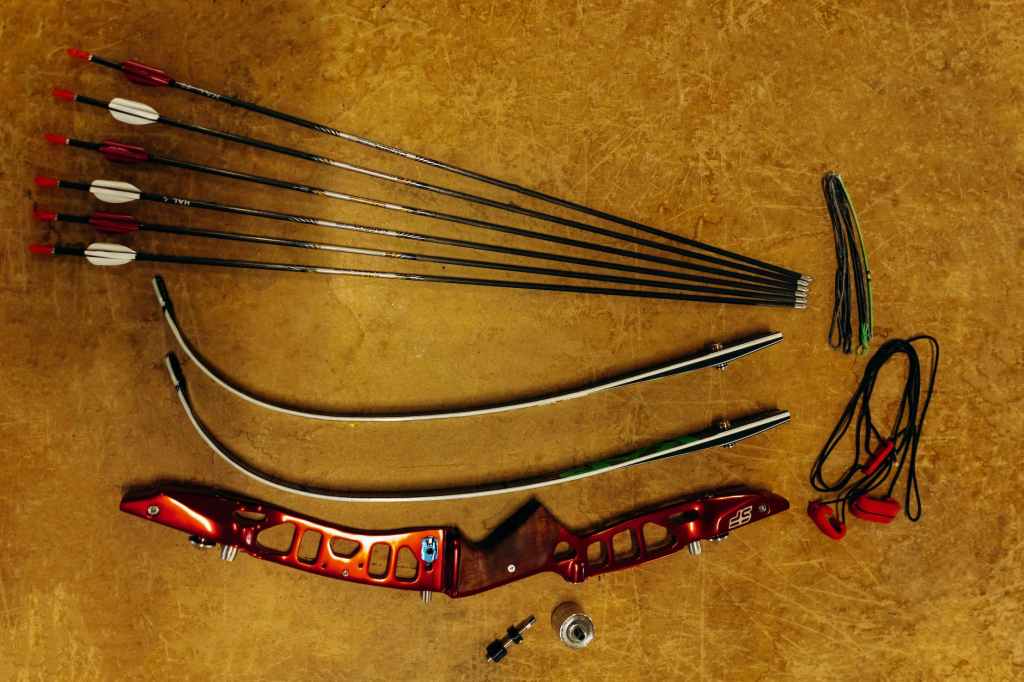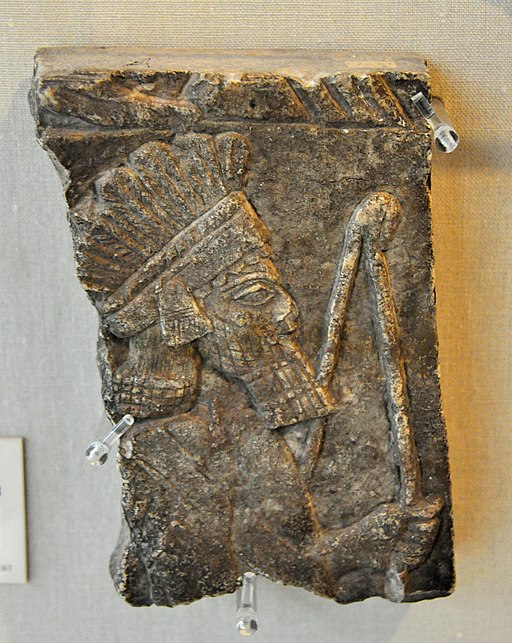Ancient Royalty and the hunters bow go hand in hand. It was a weapon that was favoured by the elite. With a sword one could usually fight one person at a time but with archery one can fire very many arrows at a time and over a distance. No wonder the top soldiers of their day used the bow. No wonder God can be described as a hunter putting down his multi coloured bow.
(Archer wearing feather headdress. Alabaster. From Nineveh, Iraq. Reign of Ashurbanipal II, 668–627 BC. The Burrell Collection, Glasgow, UK. (From en.wikipedia.org/wiki/History_of_archery))
Last time we looked at some of the implications of the rainbow and how God used it as a sign of mercy for the human race. This time we are going to dig into the text and find out more about this beautiful story. The Following is taken from the NASB.
Covenant of the Rainbow
I establish My covenant with you; and all flesh shall never again be cut off by the water of the flood, neither shall there again be a flood to destroy the earth.” 12 God said, “This is the sign of the covenant which I am making between Me and you and every living creature that is with you, for all successive generations; 13 I set My bow in the cloud, and it shall be for a sign of a covenant between Me and the earth. 14 It shall come about, when I bring a cloud over the earth, that the bow will be seen in the cloud, 15 and I will remember My covenant, which is between Me and you and every living creature of all flesh; and never again shall the water become a flood to destroy all flesh. 16 When the bow is in the cloud, then I will look upon it, to remember the everlasting covenant between God and every living creature of all flesh that is on the earth.” 17 And God said to Noah, “This is the sign of the covenant which I have established between Me and all flesh that is on the earth.” Genesis 9:1-17
In Genesis 9. 1 -17 God speaks about his bow. It didn’t really mean much to me ‘bow’. The Hebrew is very interesting in that this is described by Josephus as God’s bow. This is not a pretty picture of a rainbow but rather it is God’s warrior bow (קֶשֶׁת) . 3 (See Note from the TWOT) The Theological Word Book of the Old Testament failed to see the importance of the bow in Genesis 9. This is a sign of making peace with the earth after the judgement. It is also interesting that Andrew E Steinman said that God spoke of his bow three times here in Genesis. If God uses specific words in a very short paragraph, we ought to take notice. Josephus certainly noticed it as he wrote:
“ (103) but I will give you a sign that I have left off my anger, by my bow” [WHEREBY IS MEANT THE RAINBOW, FOR THEY DETERMINED THAT THE RAINBOW WAS THE BOW OF GOD]; and when God had said and promised thus, he went away.” (Taken from the antiquities of the Jews by Josephus- (from olive tree Bible software))

Forget about pretty pictures of rainbows in the sky. This was a covenant between Noah (for the whole human race) in which Humanity was given certain obligations and God had certain obligations. This covenant was made after God had avenged and was satisfied with cleansing the world from sin. However, God knew also that in the future he had to make a way for people to rid their natural sinful nature which came from the Fall. God laying down his Warriors Bow in the heavens was the seal of this particular covenant.
Reflection
So then in the story of Noah we learn that God has power to give life and to also take it. However Scripture also tells us that God is love. God’s loves in this common grace reaches out to the whole of the human race. In the person and work of the Holy Trinity through the two hands of God the Son and the Holy Spirit by faith we are able to boldly come into the very presence of the Father.
Someone might say; How can anyone stand in the presence of this Ultimate Power. The answer is that Jesus dies and rose from the grave so that by faith in him we can come into a personal relationship by grace and fellowship with the Trinitarian God.
Metaphorically speaking Samurai for example are experts with different weaponry including the sword and according to their training one should feel secure in the presence of a Samurai and their protection through the Budo Way. Any true soldier has a humanitarian aspect to their code of conduct of helping the needy. God as the Ultimate Warrior is also the Ultimate Lover of your soul because God created us out of love in the first place. God put down his ultimate weapon, the multicolored rainbow as an act of peace and love for His creation.
Notes
Note 3
2093 קֶשֶׁת (qešet) bow. (ASV and RSV are the same.)
The word qešet denotes the hunter’s (Gen 27:3) and warrior’s (I Sam 31:3) weapon by which arrows are shot (I Kgs 13:15ff.). Its Ugaritic cognate is qšt (UT 19: no 2287). Our word occurs seventy-seven times. Derivation uncertain.
The bow, a common weapon in the ancient Near East, was not too common in early Israel. The Benjamites, however, were noted archers (Jud 20; I Chr 8:40). Jonathan used a bow (I Sam 20:20) and later the bow became the weapon of leaders and kings (II Kgs 9:24; Ps 18:34 [H 35]). Apparently David’s lament became a permanent part of training Israel’s army, so in II Sam 1:18 the enigmatic qešet may be the title (or part of the title) of the song so employed (II Sam 1:18). By the time of Jeroboam the bow may well have been Israel’s national weapon (Hos 1:5, 7). In later times bows could be mounted with bronze (Ps 18:34 [H 35]; however, see AI, p. 243), or made of horns (AI, p. 243; B. Couroyer, “Come et arc,” RB 73:510–21). Large battle bows were strung by stepping on one end, hence, dārak qešet, to bend the bow, i.e. prepare to shoot (Jer 50:14; cf. G. Eager, in ISBE, p. 233). The conjoining of “sword” and “bow” often represents all weapons, and even war itself (Gen 48:22; Josh 24:12). A “deceitful” bow (with a flaw) always misses the mark (Israel, Ps 78:57; Hos 7:16).
Man’s bow is controlled by God (Gen 49:24). The arrow finds its mark because of God’s guidance (esp. I Kgs 22:34; II Kgs 13–16). The broken bow can represent divinely imposed defeat (I Sam 2:4), and/or peace (God peaceably “hangs” his bow, Gen 9; cf. Ps 76:3 [H 4], 46:9 [H 10]; Hos 2:18 [H 20]).
Bibliography: Yadin, Y., The Art of Warfare in Bible Lands, 2 vols., McGraw-Hill, 1963.
L.J.C.
Leonard J. Coppes, “2093 קֶשֶׁת,” ed. R. Laird Harris, Gleason L. Archer Jr., and Bruce K. Waltke, Theological Wordbook of the Old Testament (Chicago: Moody Press, 1999), 819.
Note 2
Andrew E Steinman says the following:
“God’s words to Noah and his sons continue with ratification of the covenant by a sign. God had promised to establish a covenant with those who went into the ark (6:18). Now he establishes it with those who came off the ark (vv. 910). God promises that there will never again be a flood and reiterates this for emphasis (v. 11). 1216. The establishing of the covenant comes with a sign that will confirm its validity not simply for those who came off the ark, but for all future generations who will see it (v. 12). Three times God mentions his bow in the clouds. The connection is clear: the rainclouds will bear the sign that will cause God to remember his covenant. Once again this expression notes God’s faithfulness to his promise (see comment on 8:13). Signs are often associated with God’s covenant. For instance, circumcision is a sign of his covenant with Abraham and his descendants (17:1014), and the Sabbath was a sign of God’s covenant with Israel (Exod. 31:1317). In every case the sign is primarily for the humans who receive the benefit of God’s grace. Here, though God will see the sign and remember, the comfort derived from the sign is for humans. 17. God ends his covenant promise with words similar to meaning The blessing for Noah and his sons mirrors his original blessing on Adam and Eve (9:1, 7; cf. 1:28). His placing the animals under Noah’s authority mirrors the invitation to Adam and Eve to rule the animals (9:2; cf. 1:28). Then his permission to eat meat mirrors his original grant of plants for food (9:36; cf. 1:29). In this way Genesis presents the flood not only as a destructive force that extinguished life but also as a creative force that brings a new order to the world. It also ushers in the first of God’s covenants mentioned in Scripture. This covenant was designed to provide encouragement and comfort to Noah and his descendants. “ (From Tyndale Old Testament commentaries volume 1 Genesis by Andrew E Steinman; from page 105; kindle edition)
—

Leave a comment